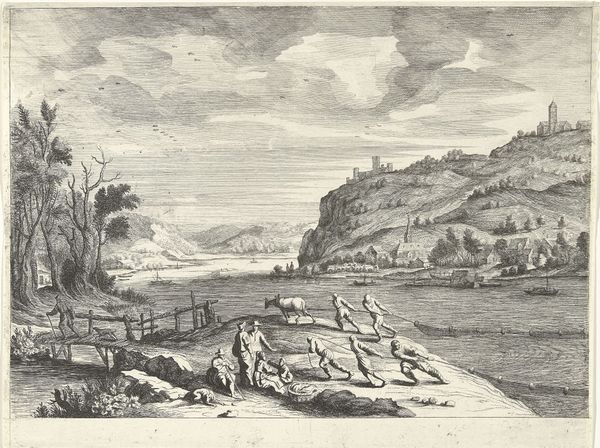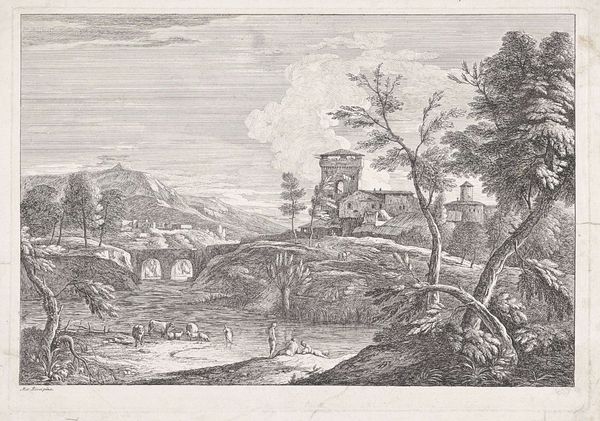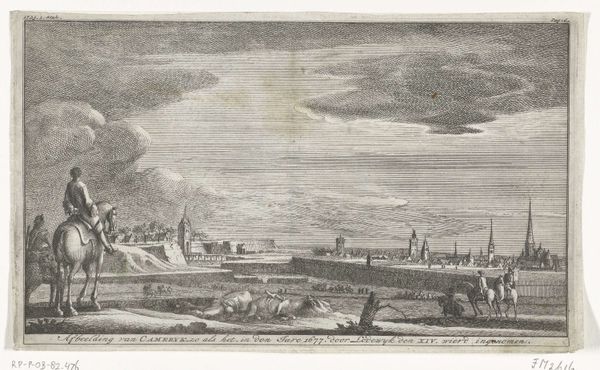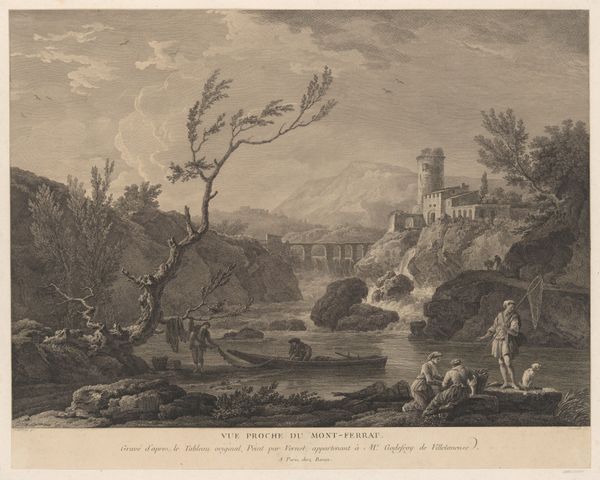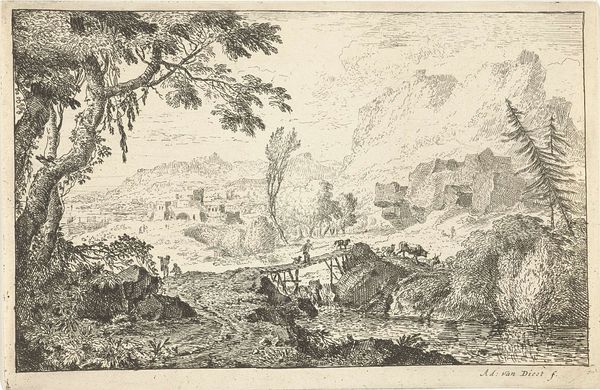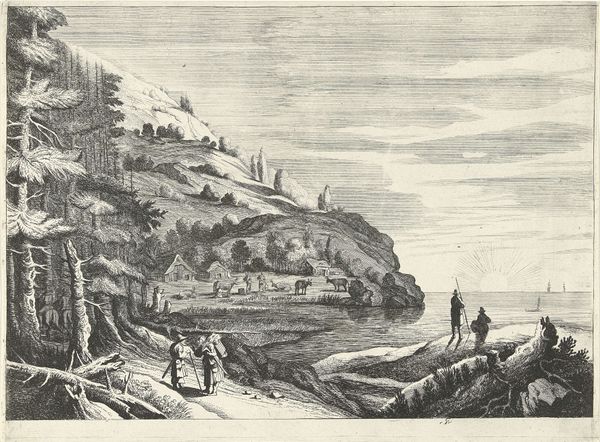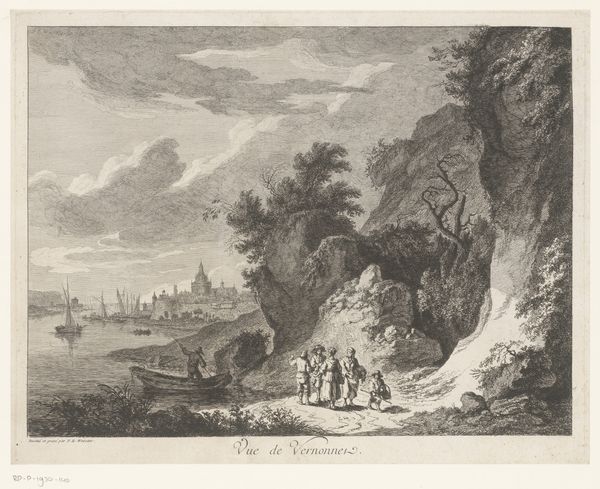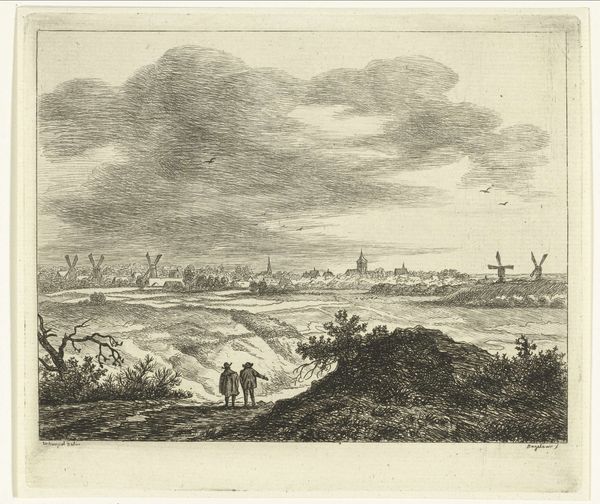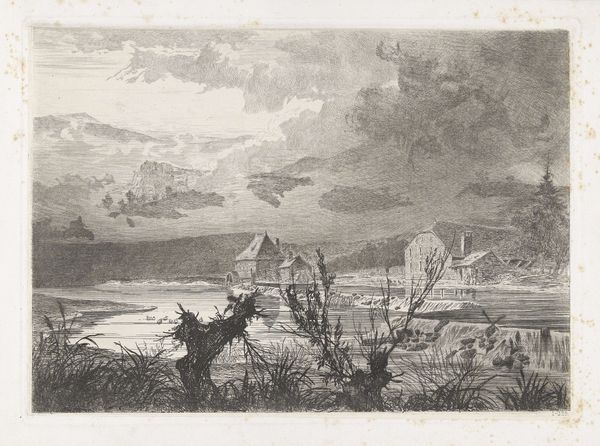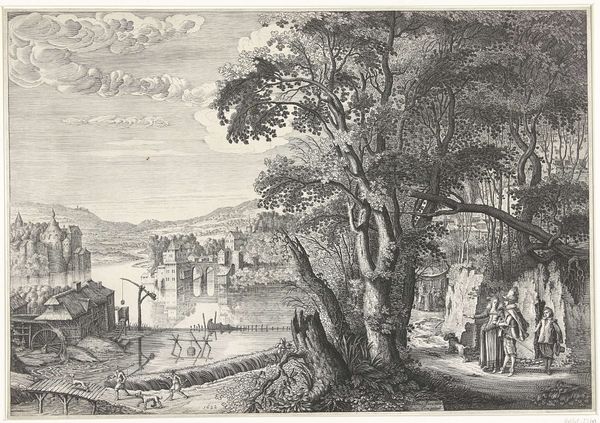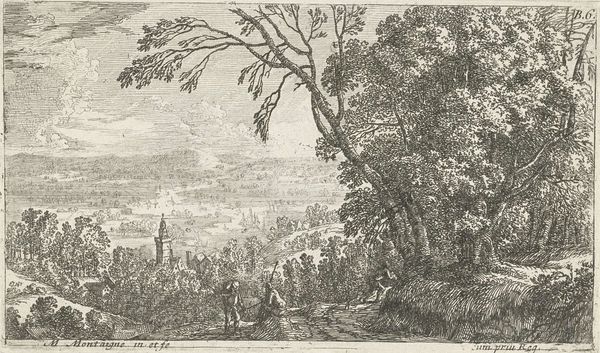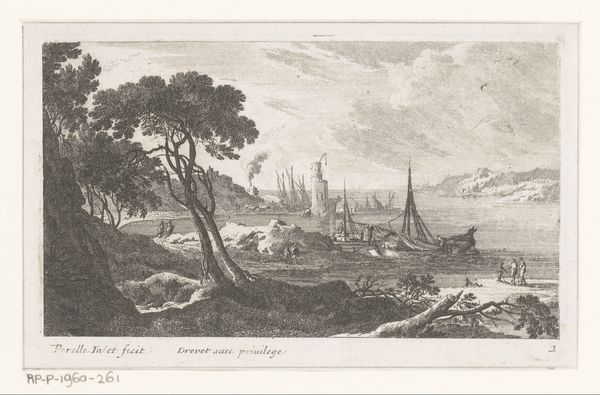
print, etching
# print
#
etching
#
landscape
#
river
#
figuration
#
genre-painting
#
realism
Dimensions: height 413 mm, width 543 mm
Copyright: Rijks Museum: Open Domain
Editor: This is "Winterlandschap met jagers," a landscape from between 1708 and 1759 by Giuliano Giampiccoli, rendered in etching. It’s strikingly detailed, but something about the monochrome palette and active scene evokes a stark, almost melancholic feeling. What draws your eye when you look at it? Curator: The composition immediately suggests the persistent influence of classical pastoral imagery on Northern European art, even well into the 18th century. Observe how the landscape is subtly idealized, presenting both nature and human activities—hunting, fishing, and even just existing—in balanced harmony. What do you make of that balance? Editor: It feels deliberate, like the artist is trying to portray a world in order. The hunters and fishermen seem small against the vastness of the landscape. It's maybe humanity’s place within something bigger? Curator: Precisely! And think about the act of etching itself, this intaglio process where lines are carefully incised and bitten by acid. It’s a controlled, methodical practice. Consider then the title "Mille arti inventa il Cacciator sagace". In essence this states that "A thousand arts and ingenuity have been devoted to the intelligent hunter" to see how a symbol can represent and define human mastery of an environment, which can itself signify cultural identity. Do you think that symbol retains power even today? Editor: That's a good point, considering current climate discussions. Seeing nature as something to master feels very outdated now, or even actively harmful. Curator: Indeed, these enduring symbols can evoke vastly different responses depending on the viewer’s own temporal and cultural situation. That is how a piece becomes transcendent and timeless, isn't it? Editor: That definitely reframes how I see it – the etching not just as a pretty scene, but as a visual artifact holding complex historical ideas about humanity’s place in the world. Curator: Precisely! And it is those complexities, those evolving dialogues between artwork, artist, and audience, that make art endlessly fascinating.
Comments
No comments
Be the first to comment and join the conversation on the ultimate creative platform.

